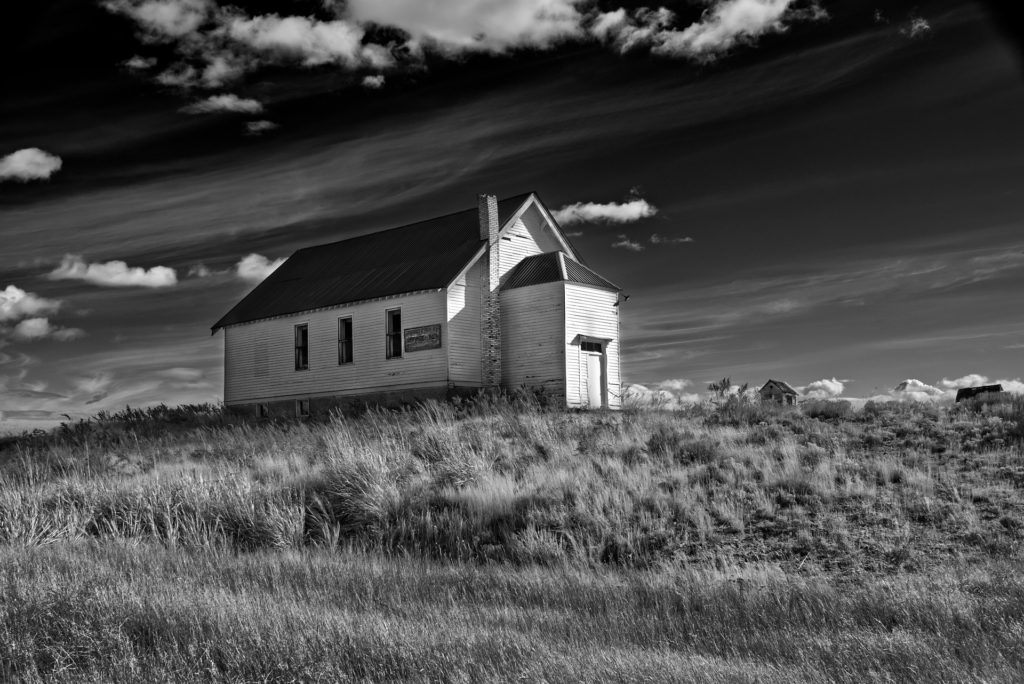February 21, 2022
Southern Gothic Tropes: Meaning “Beyond the South”
The so-called “Southern Gothic” is a subcategory of the Gothic mode that nominally revolves around the American South – as in, the Southern US States. However, as we’ll see in this post, Southern Gothic tropes far exceed the strict topical confines of the American South. Indeed, understanding these Southern Gothic tropes can reveal hidden meaning in a vast literary space.
As is the case with the Gothic in general, the Southern Gothic, too, is difficult to pinpoint. Perhaps paradoxically, considering its (again, nominal) narrow focus, the Southern Gothic describes not a place but an experience. Though Southern Gothic tropes are generally well-defined, as we’ll soon see, their metaphorical dimensions and repercussions are far more flexible.
In simpler words: The Southern Gothic isn’t about the US South.
So, let’s take an analytic but accessible look at this intriguing subcategory of the Gothic mode. We’ll start with a basic outline of Southern Gothic tropes, and then I’ll explain what these tropes really signify. As a result, we’ll discover why the Southern Gothic framework can inform our reading of a vast number of other narratives.

What Are the Basic Southern Gothic Tropes
You will find many different approaches to the Southern Gothic subgenre, with many different definitions and sets of tropes and genre markers. Like the Gothic in general, its Southern Gothic subcategory obeys to the “I know it when I see it” rule. That is, we can try to delineate its borders by listing its tropes, but the process is a tricky one.
Still, with this disclaimer in mind, the most important Southern Gothic tropes generally include:
- (only traditional, canonical narratives) Taking place in the US South. I’m listing this as a first thing just to get it out of the way. Yes, many such narratives take place in the US South (or emulate it, as we’ll soon see). But that’s only the tip of the proverbial iceberg, so let’s move on.
- Decayed, forgotten places. If Dracula’s castle is the archetypal Gothic space, Southern Gothic spaces can include derelict farms, abandoned factories, and overall areas affected by poverty.
- Eccentric characters. Some of them can be presented as eccentric outside the context (that is, us spoiled city dwellers see them as eccentric), some are eccentric even within the framework of the story (think of the town fool). Most of them are presented as working-class and uneducated.
- Charged gender roles. What that means can assume many forms. Early Gothic narratives often hinted at incest, and Gothic sexuality is an overall fascinating topic, with many dimensions. Southern Gothic includes, at the very least, unusual gender roles in relation to the sociocultural context of the story (think of a woman taking charge in a male-dominated society), though themes of incest are indeed often present.
- Temporal distortions. As in any Gothic narrative, Southern Gothic tropes often show time as special, in some way. This is often related to the past and buried (sometimes literally!) secrets, but can also involve naive hopes about the future.
- Isolation, stagnation. One typical trope in Southern Gothic is the inability to escape the context of the story. Whether due to poverty, past secrets, or any other reason, characters in such narratives are often trapped, doomed to perpetually subsist in this decayed world.
Example Southern Gothic Narratives
In terms of canonical texts, some narratives you’ll often see are As I Lay Dying, by William Faulkner (overall, most of Faulkner’s work would count as Southern Gothic); Midnight in the Garden of Good and Evil by John Berendt; Beloved, by Toni Morrison; A Feast of Snakes, by Harry Crews.
In terms of films or series, think of True Detective (the first season, anyway), The Gift, Winter’s Bone, or U Turn. The order I’m giving these is not random: They are set, respectively, in Louisiana, Georgia, the rural Ozarks of Missouri, and Arizona. Of these, only the first two count as 100% Southern, while the third one would be a fascinatingly ambiguous in-between state (pun intended) of affairs, whereas Arizona is a different area altogether.
But this doesn’t matter for our purposes. As I said, the whole idea is that the Southern Gothic is… not South. Not only South, anyway.

The Ambiguous T(r)opology of the Southern Gothic
Let’s remember something I said a few paragraphs above: Many Southern Gothic narratives might not be set in the South, but they emulate it. What does that mean?
That they deploy the tropes – which socioculturally are associated with the South (whether justifiably or not is something we’ll return to) – in order to convey a similar affective response.
In simpler words (and at the same time with an example): Oliver Stone’s U Turn, mentioned above, is not set in the South. However, here’s the plot of the film, as offered by Wikipedia (spoiler alert). Or, if you’d like a spoiler-free version, here’s a summary from IMDB:
A man running from a mysterious past is trapped in a small desert town after his car breaks down. Everybody in this town seems to have totally lost their mind and Bobby can’t wait to leave. But there is a problem: Bobby doesn’t have the money to get his car back. So when an aging man offers him money to kill his young wife Bobby seriously thinks about it. However the gorgeous young woman casts some kind of spell on him and she asks him to get rid of her husband. But this time, the stakes are much higher…
Compare the list of tropes further above with this short summary – indeed, one too incomplete to paint the picture; if you’ve seen the film, you certainly know exactly what I’m talking about.
Southern Gothic Tropes Are about Affect; not Place
Perhaps you’d argue that Arizona might not be in the South but it’s at least in the same country. I mean (or rather you do, in this hypothetical argument!) can there be non-US Southern Gothic?
You bet!
Indeed, with incredible overlap – not only in terms of tropes, but even including the racially charged past. Here’s my favorite example, the novel Triomf, by Marlene van Niekerk (synopsis by Goodreads):
Mol Benade, her brothers Treppie and Pop, and son Lambert live in a rotting government house, which is the only thing they have, other than decaying appliances that break as soon as they’re fixed, remembrances of a happy past that never really existed, and each other – a Faulknerian bond of familial intimacy that ranges from sympathetic to cruel, heartfelt to violently incestuous. In the months preceding South Africa’s first free election in 1994, a secret will come to light that threatens to disintegrate and alter the bonds between this deranged quartet forever. [my emphasis]
Once again, I let you find the connections and fill in the details.
Feel free to also take a look at Tasmanian Gothic, by Mikhaeyla Kopievsky, with whom I had a nice virtual chat.
What a Flexible Approach Means in Terms of Reading
In simpler words: If we embraced such a wider, more flexible meaning of Southern Gothic tropes, what would we get in terms of literary knowledge? How would it help us read texts differently?
The answer is hidden in plain sight, like so many other things in literature. Moreover, it’s the exact same answer to the question, Why do we need theory in literature?
So, I answer both: Because having a set framework allows us to seek patterns we would have hard time seeking otherwise.
In other words, knowing that tropes – indeed, combinations – like poverty and violence, decay and isolation, taboo sexuality and stagnation, are not just about the South (doesn’t that sound ridiculous, when you read about it?) allows us to discover these – and more – in any context, literary or sociocultural.
Want the same thing in simpler words, still? Understanding Southern Gothic tropes allows us to understand we carry the South within us.
There Are no Neat Separations
Ultimately, it’s important to recall that neat separations are extremely rare. More often than not, they are artificial constructs, put there to create a false dichotomy. Even if we wanted to limit the Southern Gothic to the South (which, as we saw, is tricky to begin with), we’d have to then deal with some peculiar situations.
Would a Texas oil tycoon be considered “as Southern” as a factory worker from Louisiana? And how would both relate to, say, a homeless man from Michigan?
Indeed, the key element of the Gothic – all Gothic – is ambiguity; the in-between, the eternal now, the negative capability that fiercely resists answers.
Because, in the end, what matters is not answers; it’s questions.
I don't show you ads, newsletter pop-ups, or buttons for disgusting social media; everything is offered for free. Wanna help support a human internet?
(If you'd like to see what exactly you're supporting, read my creative manifesto).
